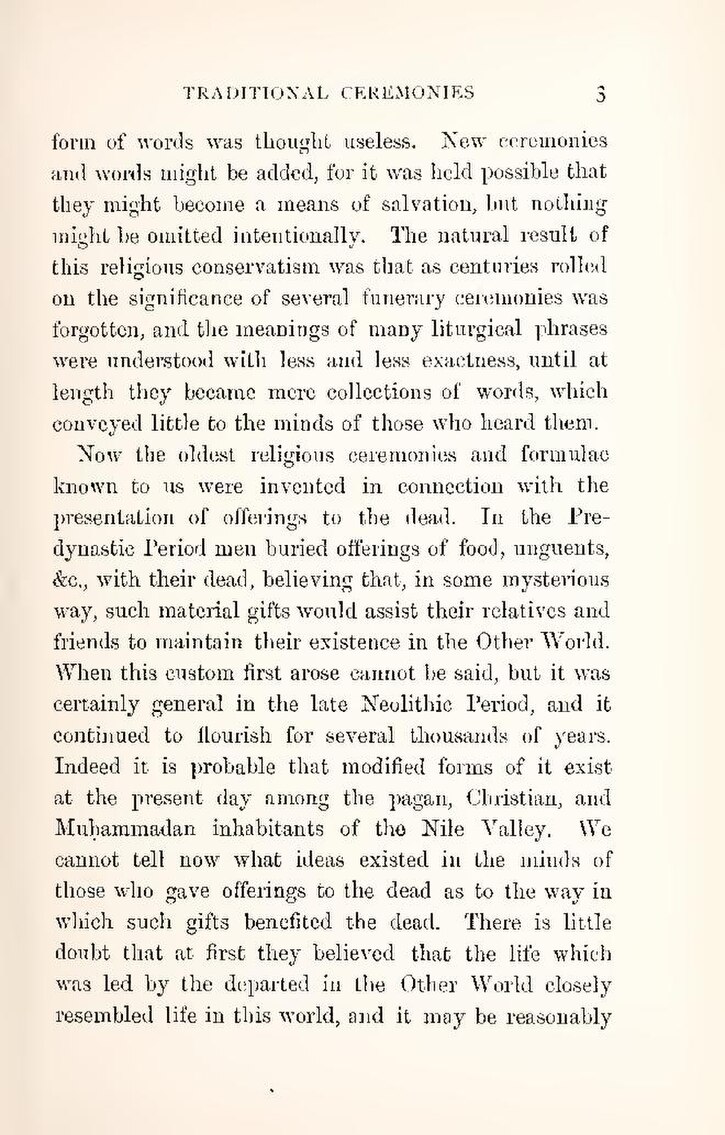form of words was thought useless. New ceremonies and words might be added, for it was held possible that they might become a means of salvation, but nothing might be omitted intentionally. The natural result of this religious conservatism was that as centuries rolled on the significance of several funerary ceremonies was forgotten, and the meanings of many liturgical phrases were understood with less and less exactness, until at length they became mere collections of words, which conveyed little to the minds of those who heard them.
Now the oldest religious ceremonies and formulae known to us were invented in connection with the presentation of offerings to the dead. In the Pre-dynastic Period men buried offerings of food, unguents, &c., with their dead, believing that, in some mysterious way, such material gifts would assist their relatives and friends to maintain their existence in the Other World. When this custom first arose cannot be said, but it was certainly general in the late Neolithic Period, and it continued to flourish for several thousands of years. Indeed it is probable that modified forms of it exist at the present day among the pagan, Christian, and Muḥammadan inhabitants of the Nile Valley. We cannot tell now what ideas existed in the minds of those who gave offerings to the dead as to the way in which such gifts benefited the dead. There is little doubt that at first they believed that the life which was led by the departed in the Other World closely resembled life in this world, and it may be reasonably
